Losing good employees has always been a challenge for businesses, but it currently is presenting an even greater set of problems:
- Costs related to hiring and training new employees continue to increase.
- Some businesses cannot meet customer demands
because of a shortage of employees, which upsets customers and sends them to competitors who can deliver. - Although many departing employees cite better compensation as the reason for leaving, other factors related to company culture are also driving good employees away.
Can an emoji predict turnover?
More employers are looking to implement “early warning systems” that help them understand when turnover at the organizational level might change. BI WORLDWIDE Canada (BIW) is committed to helping our clients better predict when turnover may occur, and we use what some might see as an unlikely source…
An emoji.
With our proprietary, quick, easy-to-use, WorkHappier Profile℠, BIW has developed a powerful tool that can predict when overall employee turnover may change. We developed the tool using an emoji, which is easily understood and embraced by employees across the globe.
More importantly, behind our friendly emoji is significant research that predicts employee turnover in the continental USA, Canada, or Mexico.
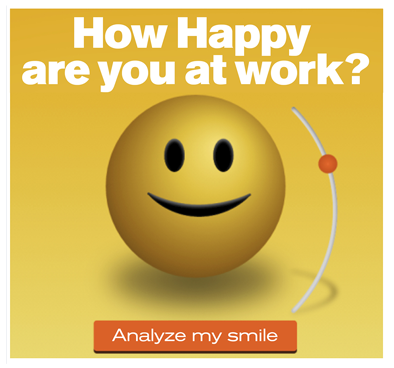
GroGroup travel programs bring teams together outside of the office, allowing them to form bonds and build loyalty through experiences. Travel has a visible impact, provides lifelong memories, and creates ongoing collaboration for your teams. Let’s lay the evidence out for you about the power of our emoji, the WorkHappier Profile℠, which creates a score based on where the “slider” is placed and predicts our full New Rules of Engagement survey, which contains 36 items in 12 factors. These twelve factors predict self-reported “intent to stay”. Here are the results from one of our studies that established strong evidence for this:
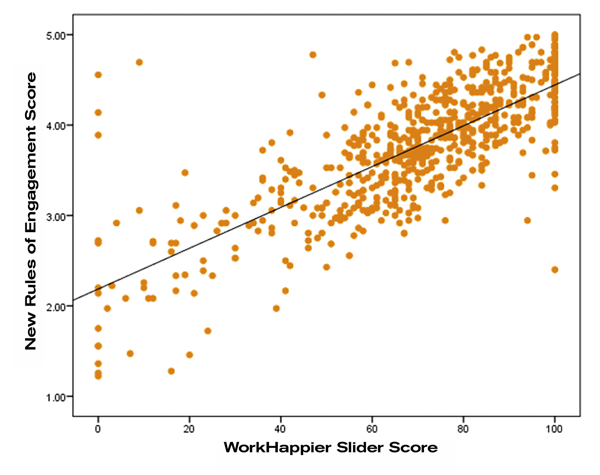
The correlation between where an employee places the slider and our full engagement survey in this study is .87.
Why is this beneficial? If you conduct an annual employee engagement survey, our Profile will likely predict the results from your full survey. This means the Profile can act as a proxy for the overall results you see in your annual survey. And the better news about the Profile is that you can have it turned on all the time and can trend results more frequently, which can help you have a chance to proactively implement changes to address concerns. Users tell us the experience is fun, interactive, and informative.
Predicting turnover
We have taken this one step further in establishing evidence that the WorkHappier Profile℠ predicts organizational employee turnover. Below is a case study from a client with whom we have been doing business for over 10 years. They use the app as a way of gauging and trending employee engagement. The results provide evidence that the app predicts employee turnover. A year prior to exiting, exiting employees’ scores looked just like those who ended up staying – around 80. As employees got closer to their ultimate exit date, their scores on the WorkHappier slider declined to closer to 50. Watching the WorkHappier scores across the organization over time can alert employers to how their employees’ sentiments about work may be changing.
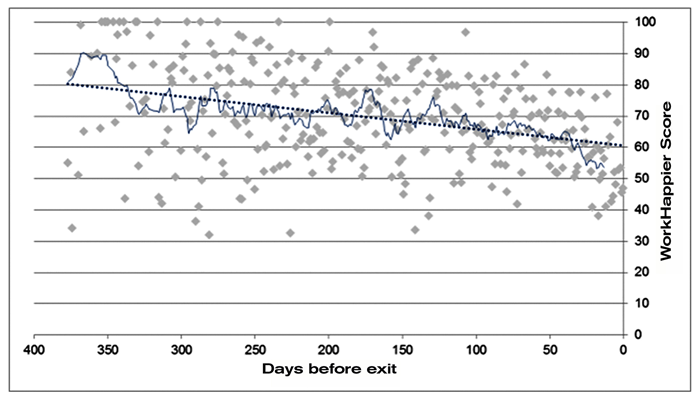
From disengagement to departure
For many disgruntled employees, our WorkHappier app predicts “work unhappiness,” and those employees reporting their unhappiness are more likely to quit.
What is the psychology behind the WorkHappier app that can predict employee behaviour?
Why can the app predict, in this case, employees quitting?
My co-author Leigh Branham and I showed a common path of emotions and actions that can often lead employees to quit:
“… there are actually several sequential and predictable steps that can unfold in the employee’s journey from disengagement to departure.”
This disengagement process generally takes some time. We don’t tend to go through all of these steps in a few minutes. We believe our WorkHappier app is tapping into the emotions an employee is having before they leave. They may be somewhere on these steps and because they are feeling demoralized, they’re self-reporting a lower level of happiness at work.
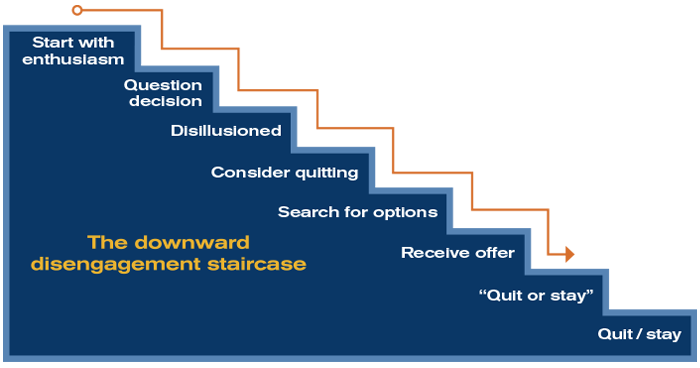
When they’re smiling less, they’re more likely to depart.
Recognize to re-engage
One of the strategies you must employ to re-engage employees is to make sure they are valued and are provided meaningful and memorable recognition for their contributions.
Consider:
A financial services company found that locations, where there were higher levels of associate recognition, were more likely to have lower employee turnover and better customer feedback. The investment they made into their employee recognition program provided a significant return because of reduced costs related to employee turnover.
A primary health care provider found that locations with higher levels of peer-to-peer recognition and recognition with an economic value were, on average, more likely to report higher employee engagement scores via our New Rules of Engagement model and less likely to say they wished they were working somewhere else.
A manufacturing company found that employees who received recognition in the past 90 days were more likely to feel valued as an employee.
Creating our future
As the great management consultant Peter Drucker said:
“The best way to predict the future is to create it.”
Let’s strive to create an even more engaging, productive workplace. We can use the WorkHappier app as a guide to better understand whether we’re making a difference in building a culture where people stay, work hard, and thrive.
We can re-engage employees before it’s too late! If we know there is a retention risk, we can be proactive in creating a more inspiring place to work:
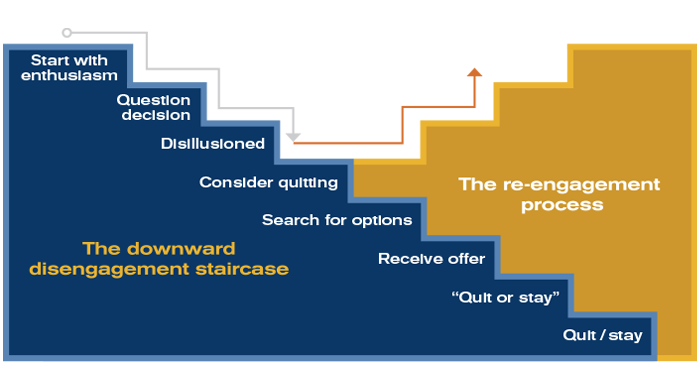
Let’s create our future. Let’s be more proactive in identifying our retention risk and building a culture where employees can stay, thrive, and contribute.
Our emoji assessment is the “canary in the coal mine,” telling us that employees aren’t happy and are actively looking for options.
